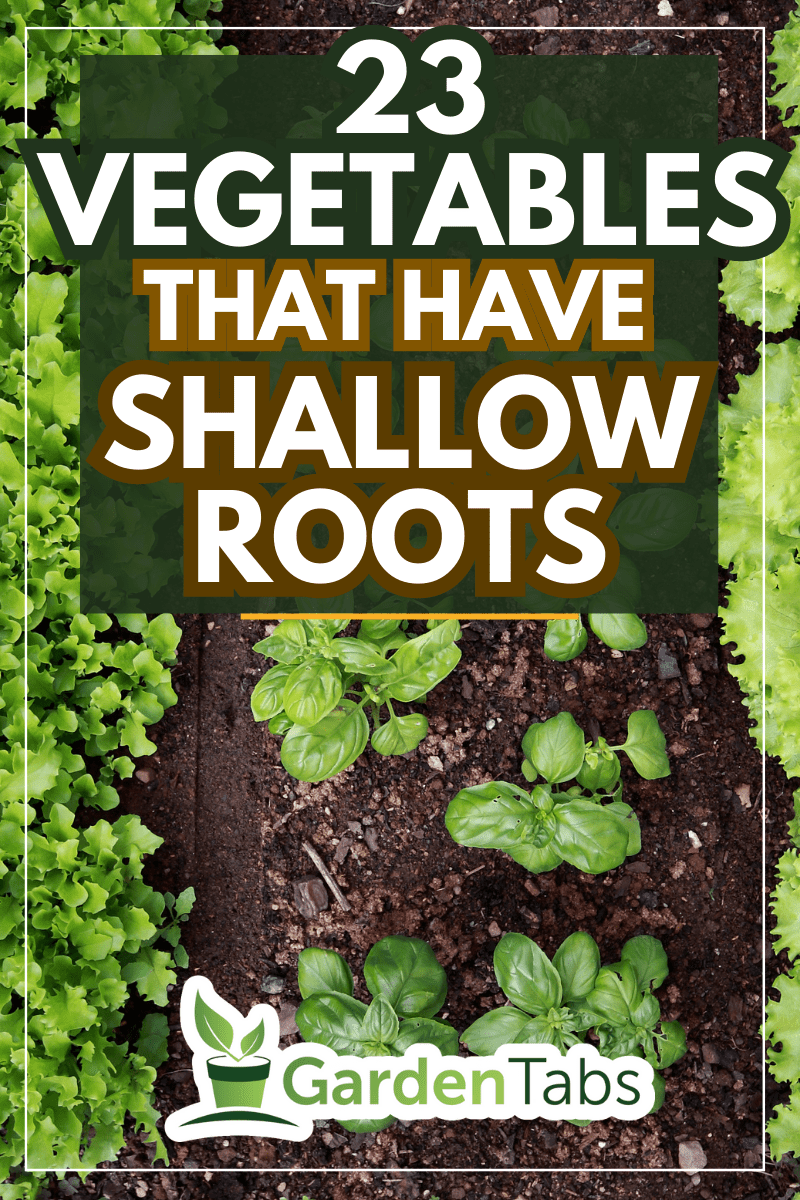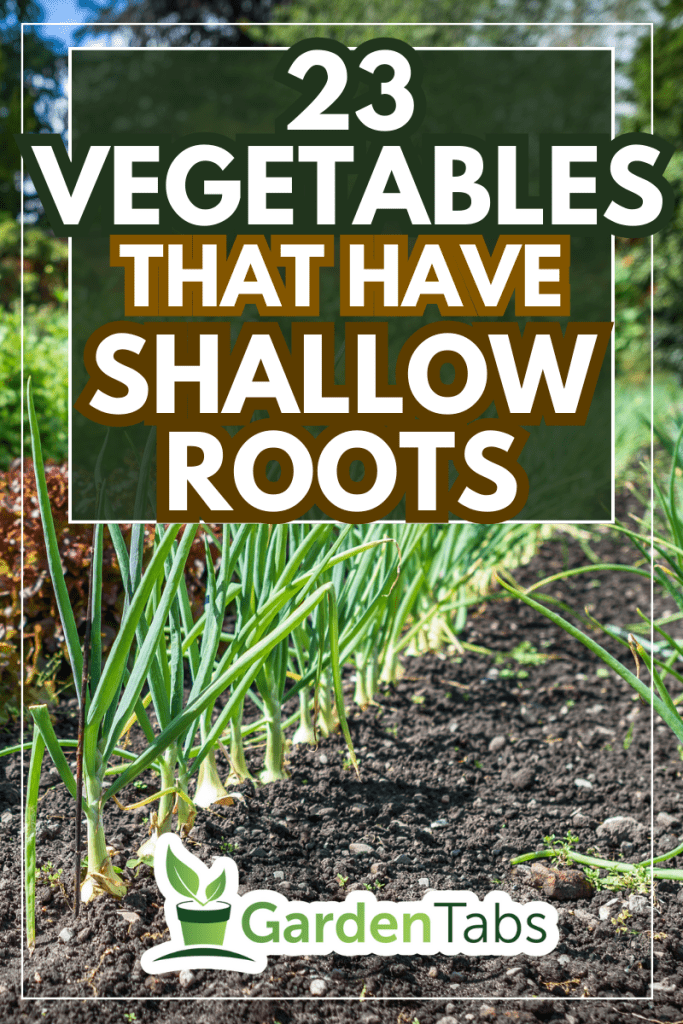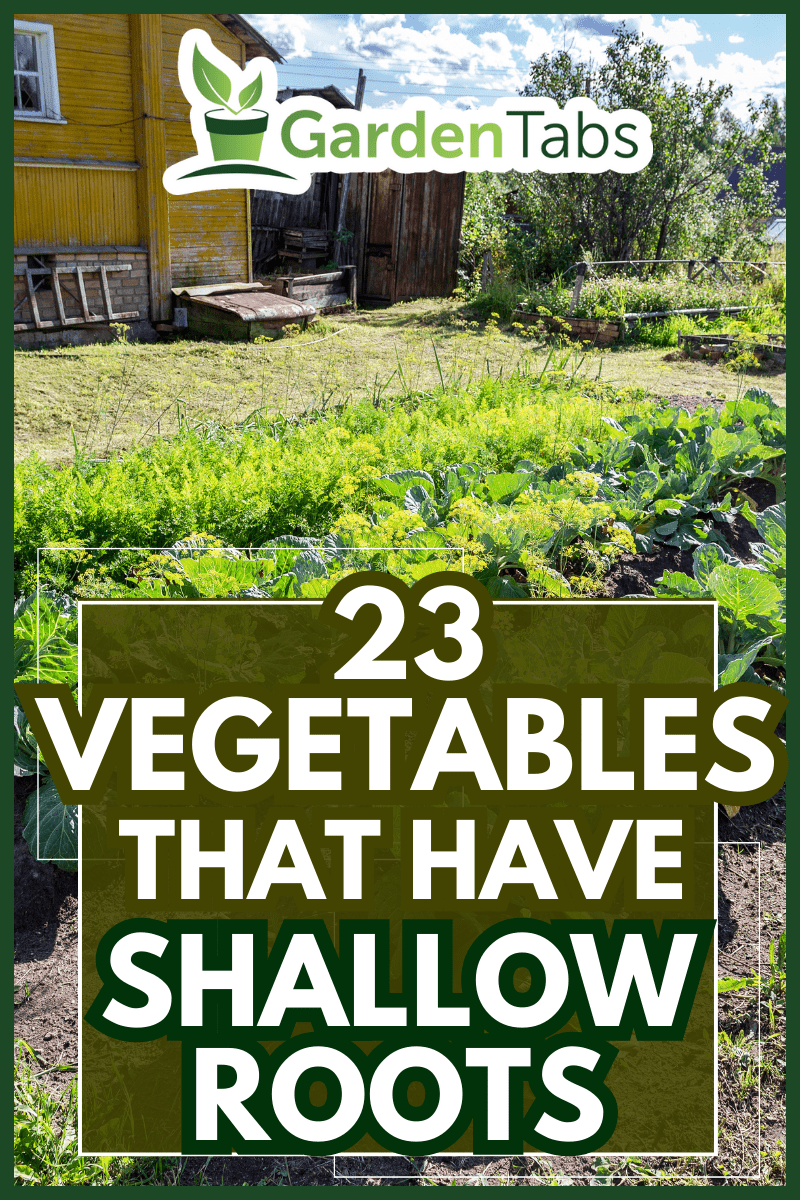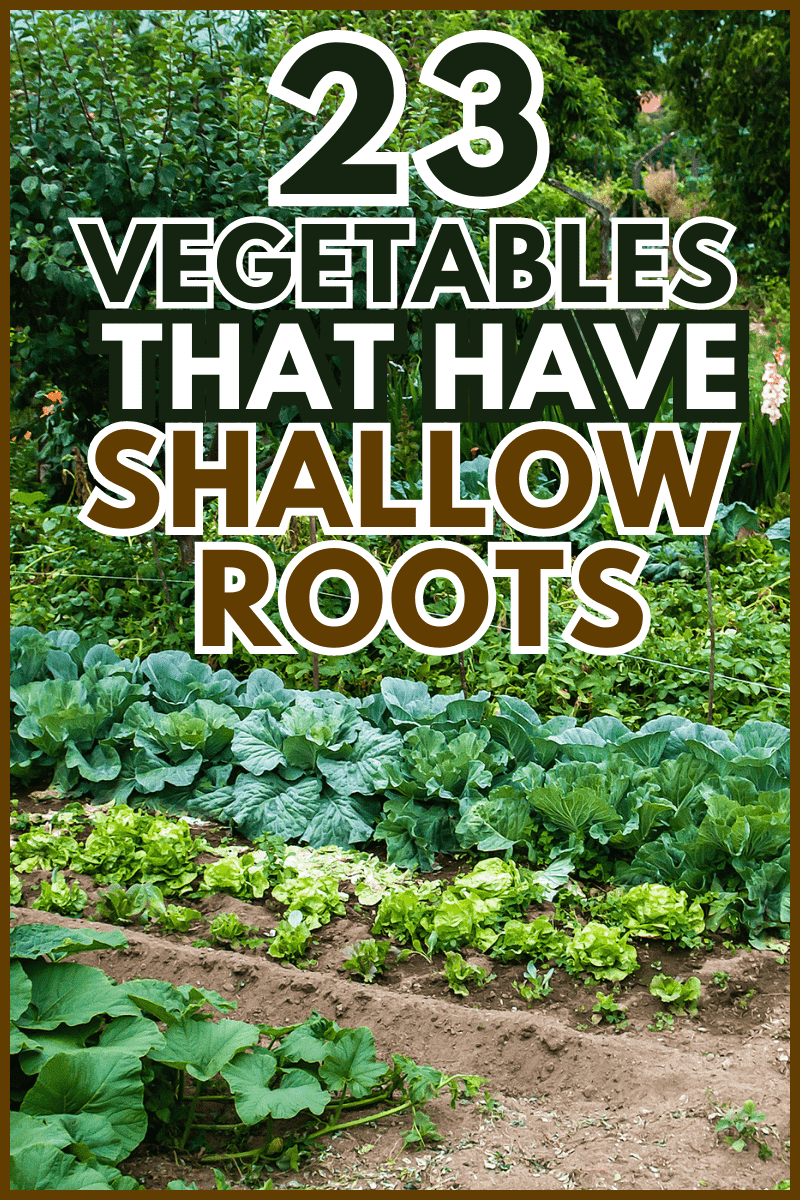As a gardener, you may wonder what vegetables have shallow roots. If you're looking to grow your own shallow-rooted veggies and need to know where to start, look no further. We've researched the topic and have all of the answers you need.
These vegetables have shallow roots:
- Garlic
- Onion
- Lettuce
- Brussel sprouts
- Bok choy
- Radish
- Strawberry
- Mint
- Mustard green
- Kale
- Broccoli
- Cauliflower
- Spinach
- Cabbage
- Arugula
- Microgreens
- Corn
- Green onion
- Chard
- Leek
- Chive
- Potato
- Herbs: thyme, mint, parsley, and cilantro
There is more to learn when it comes to growing vegetables in shallow soil. Continue reading this post to learn whether or not cucumbers have shallow roots, what plants you can grow in eight inches of soil, what herbs are best for shallow soil, and more.
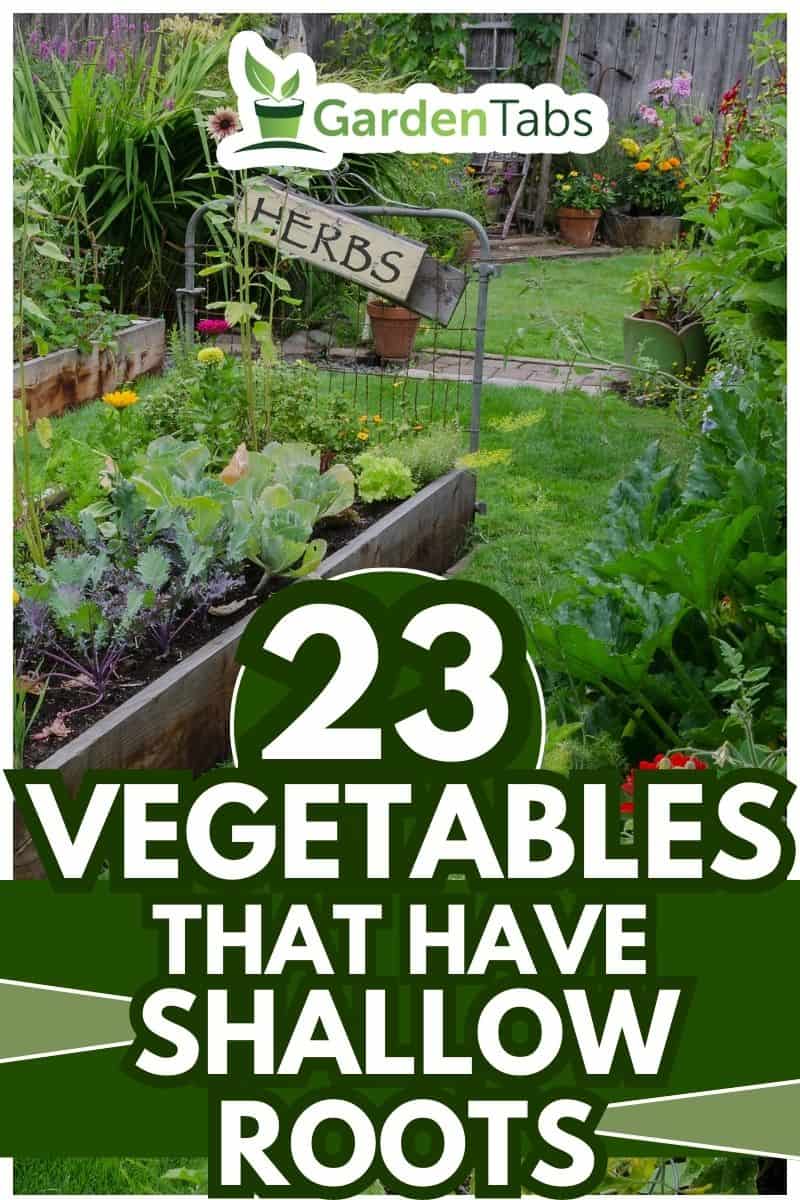
Growing Shallow-Rooted Vegetables
More and more people are growing vegetables and herbs in their own homes. Utilizing shallow containers is an excellent way to do this successfully.
Whether you have limited space outdoors or limited time to tend to a garden, you can still grow a plethora of vegetables.
Since shallow containers do not need as much soil as bigger containers, you can actually save money by using shallow containers or pots.
These are lightweight, which makes them easier to transport than big bulky pots.
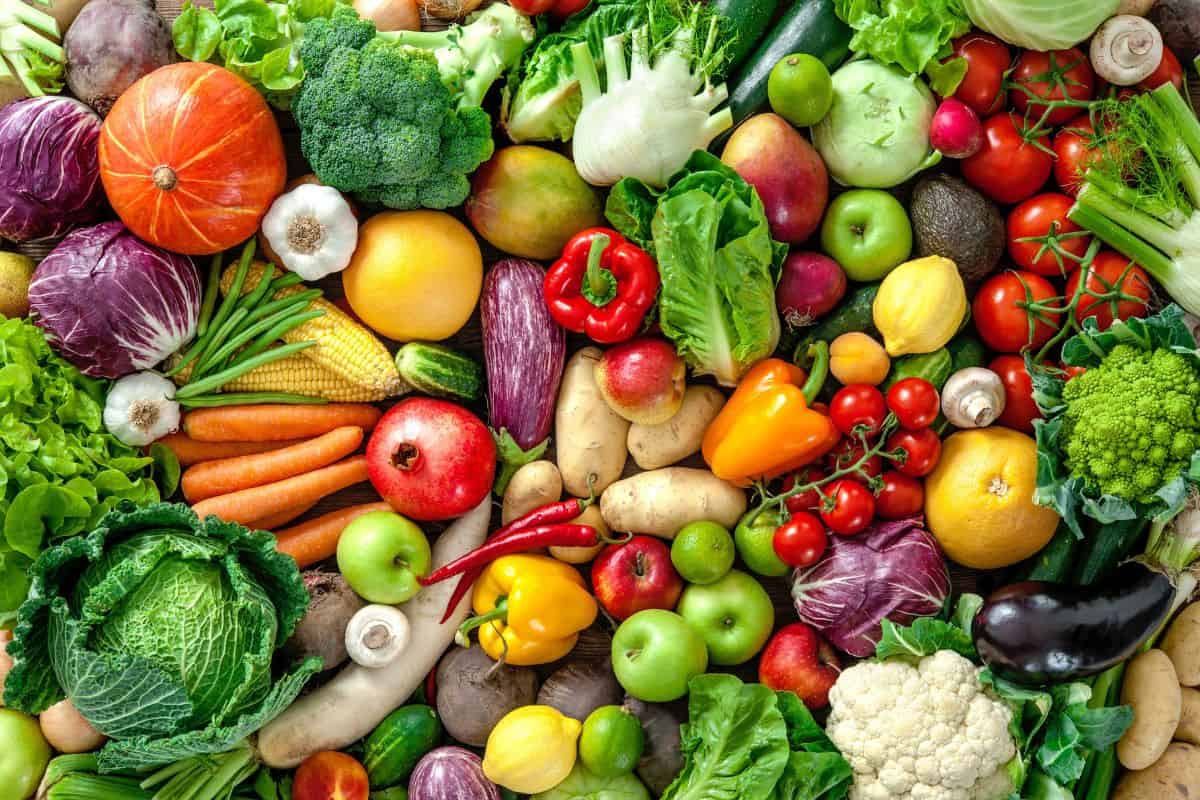
While you can't necessarily grow any vegetable you want in a shallow container, there are more options than you may initially think.
What Veggies Can I Grow in Shallow Pots?
You can grow a number of vegetables in shallow pots, including vegetables such as radish, onion, garlic, and mustard greens.
Most of these only need a few inches of soil to be able to take off and grow right before your eyes. Vegetables that can grow in shallow pots are great because they do not take up a lot of space and are fairly easy to maintain.
In order to be considered a shallow-rooted vegetable, the vegetable should require six to eight inches of soil in a pot. Drainage holes are an important necessity when growing any vegetable or herb in a pot.
More About Vegetables with Shallow Roots
It is important to remember most vegetables that have shallow roots require full sun in order to thrive.
Vegetables with shallow roots get their nutrients from the top layer of soil. What this means is you need to be sure the soil is good, preferably compost.
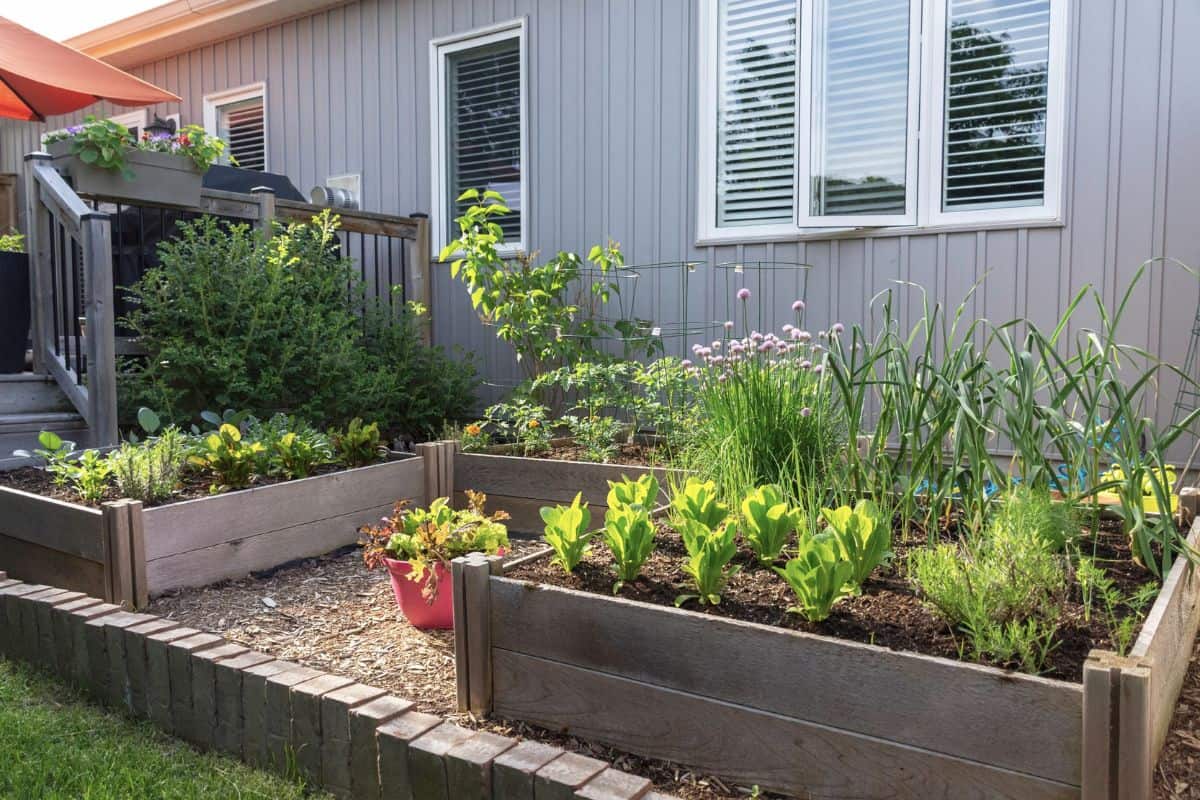
Keep in mind how quickly the vegetables you are planting will grow. If you plant too many of the same vegetables, you may end up with too much to be able to keep up with.
Some people sell their produce locally or give it away if they overproduce.
Whenever you water vegetables that have shallow roots, the water is absorbed quickly. The fibrous roots of these vegetables anchor in the soil right at the top and can result in strong healthy vegetables over time.
Mint should be grown separately from your other plants because it is an invasive plant.
Do cucumbers have shallow roots?
Yes, cucumbers have a somewhat shallow root system. It is important that you consistently water at least the top six inches of soil that your cucumbers are growing in.
If you grow cucumbers in a pot, it needs to have good drainage and the correct spacing between plants in order for them to be able to thrive.
Your best bet is to plant your cucumbers to train on a fence, chicken wire, or trellis.
Doing this will allow your plant to grow up off of the ground and ensure that there is less risk of disease and rotting from cucumbers laying in damp/wet soil.
Which Vegetables Have Thin Roots?
If you are limited on how much space you have for growing vegetables, considering the depth of their roots is important.
Radishes and spinach are two examples of vegetables with extremely shallow roots. You can grow either of those in four to six inches of soil.
Click here to see this potting mix on Amazon
Does Kale Have Shallow Roots?
Not exactly. Kale is considered to be a medium-rooted vegetable. This is not the best choice for extremely shallow containers, but it can flourish if your pot or space is big enough.
Kale grows best in eight- to twelve-inch pots. Eight inches is the minimum if you want the roots to have enough space to allow the kale to grow properly.
The soil needs to be able to drain well and you should use a lot of organic matter to grow it in.
What Plants Will Grow In Eight Inches Of Soil?
Herbs like oregano and basil are perfect for growing in eight inches soil. Thyme, mint, and fennel are three good examples of plants that can grow in only four inches of soil.
Some vegetables that you can grow in only four to six inches of soil include garlic, onions, cauliflower, strawberries, mint, mustard greens, leeks, chives, cabbage, and radishes.
Corn and potatoes are considered shallow-rooted vegetables also.
Click here to see this set of 8-inch pots on Amazon
Many more plants are able to grow and thrive in eight to 10 inches of soil.
Onions and strawberries need a minimum of four inches of soil while strawberries need for to six inches of soil. Lettuce needs a little more soil at six inches.
Tomatoes and carrots need eight to 12 inches of soil. Spinach, oregano, basil, Swiss chard, arugula, and kale all only need a minimum of eight inches of soil as well.
Do All Herbs Have Shallow Roots?
All herbs do not have shallow roots. In fact, not all herbs can thrive in shallow soil. Although many herbs do have shallow roots, sage and rosemary do not. Parsley and basil do not have shallow roots either.
Chive plants have the shallowest roots. Their roots are only about three inches long. Chives and basil come in handy when you have them growing in your home year round.
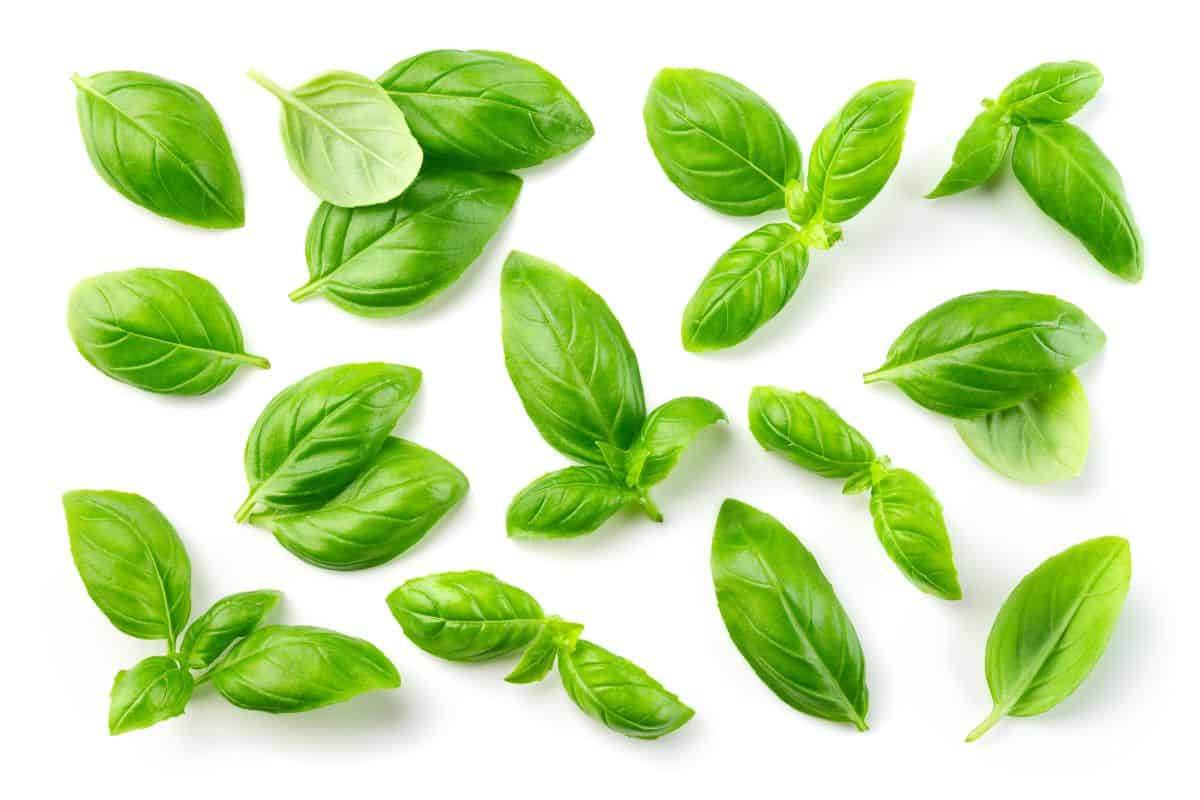
Thyme and oregano have roots that are about six inches long. Basil and parsley have the deepest roots of these and require a pot or container with at least 18 inches of soil in it.
Rosemary and cilantro need some extra room to grow. Cilantro needs about eight inches of soil while rosemary does better in approximately 12 inches of soil.
Another important factor to note is that cilantro requires lower temperatures to grow and flourish.
Lavender is similar to rosemary when it comes to its root system. Both need to be planted in pots that are no smaller than twelve inches tall. Do not forget to prune your herbs. That is an essential step in the growing process.
Fresh herbs are so helpful to have at home. This can save you a trip to the store and allow for a better flavor profile in all of your favorite dishes. Fresh herbs have a distinct flavor that is never dull like that of ground-up herbs.
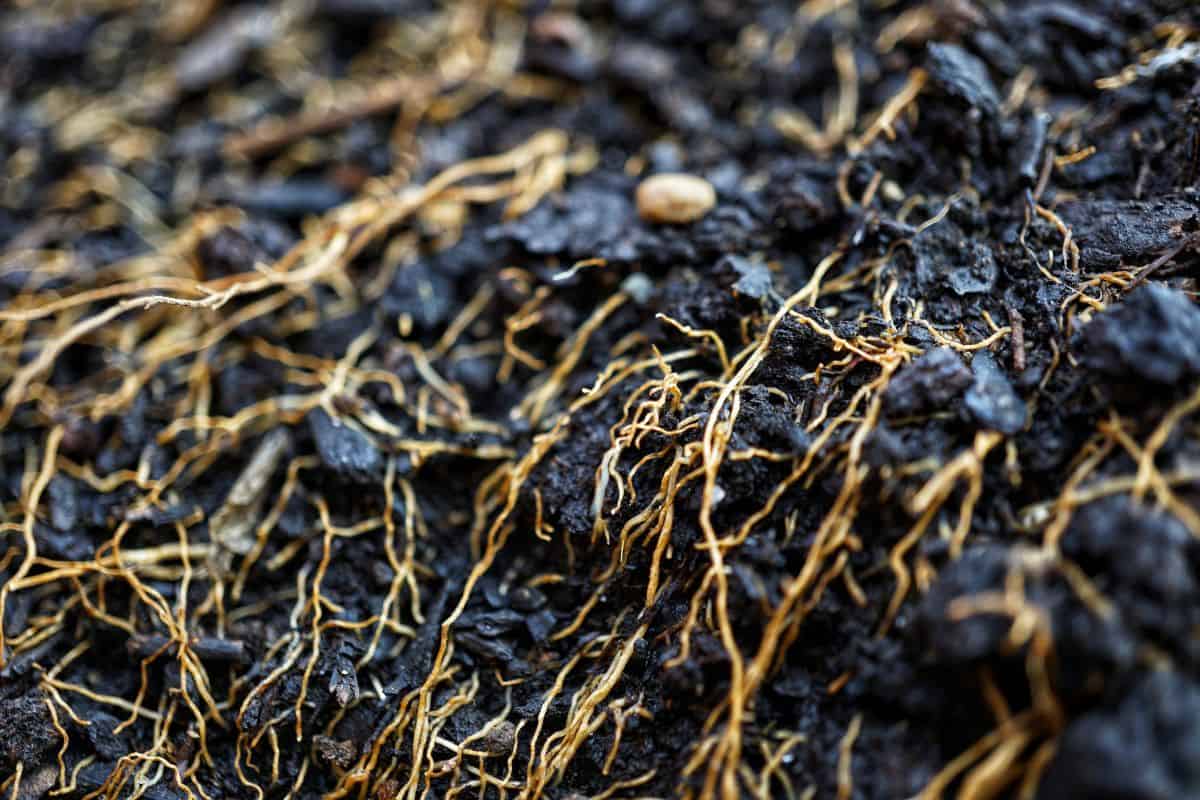
Does Garlic Have Shallow Roots?
Yes, garlic has shallow roots. Unlike other plants with shallow roots, garlic needs ample room to grow and expand in the soil. The pot you use should be at least 12 inches wide and one-and-a-half feet deep.
Garlic has many health benefits and is fairly easy to grow. The roots can grow between two and 24 inches deep. That is quite the range!
To Wrap Things Up
Overall, there are many vegetables to choose from that have shallow roots, including chives which have the shallowest roots of all.
Some other examples include leafy greens, onions, radish, and broccoli, to name a few.
You can start these veggies indoors and transfer them when the weather is warm enough or begin them outdoors when the planting season is appropriate. Planting indoors in containers is a great way to hone your growing skills.
Before you go, check out the following links related to growing your own vegetables:
What Vegetables Can I Grow In Pots? [12 Fantastic Options]

